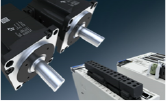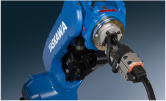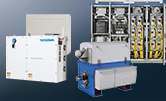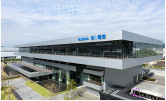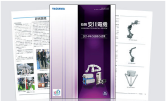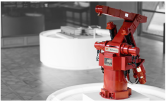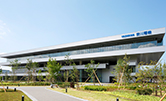Improving engagement through dialogue
Identifying engagement levels through proactive communication with employees
PDCA of improvement through analysis of ES questionnaire
Since FY2016, we have been conducting monthly ES questionnaire surveys for employees of Yaskawa Electric in order to collect their individual opinions and not just monitor their satisfaction. We measure the level of understanding and penetration of management measures, the sense of busyness in the workplace, and the level of satisfaction with the human resources system through registered questionnaires and analyze the data in specialized department to rotate PDCA cycle. Then, we aim to solve various problems faced by employees and to foster a corporate culture in which management and all employees become more united. The response rate of the ES questionnaire exceeds 90% every month, and various opinions and requests are received.
The results of the questionnaire analysis are shared internally every month, and we provide feedback on all opinions and requests. We quantify the percentage of employees with job satisfaction every six months, and the positive response rate has remained high at around 80%. By analyzing the results of this survey in detail, we are able to identify the factors that contribute to the improvement of job satisfaction and the characteristics of each workplace in a timely manner and are working to make speedy improvements while prioritizing issues that need to be improved.
An analysis of the survey on job satisfaction conducted in FY2023 shows that “pride in working at Yaskawa” and “sympathy with the Yaskawa Principles” are positive, but “realization of career paths” and “environment for consulting on careers” need to be improved. We will raise the priority of items requiring improvement and proceed with initiatives.
Results analysis of ES questionnaire for job satisfaction (May 2023)
In order to understand the factors that contribute to the improvement of job satisfaction, we set 15 questions on topics such as “pride in working at Yaskawa,” “empathy with the Yaskawa Principles,” “growth opportunities,” and “career realization.” The analysis is based on the positive response rate for each question and the correlation between each item and job satisfaction.
Direct dialogue with management
We conduct our own activities to promote human resource development through direct dialogue (dialogue meetings) with the president. As the president himself in charge of human resource development, under the motto of development of human resources who will play a role in the evolution of the Yaskawa Group, we expand the circle of communication with employees and strengthen the motivation of participants and the development of human resources that takes on challenges through interactive dialogue.
Labor-management relations
Yaskawa’s labor union began as the Yaskawa Electric Manufacturing employees’ union on December 25, 1945 and later changed its name to Yaskawa Workers Union, which is currently under the Japanese Electrical Electronic & Information Union (“JEIU”).
The number of union members, including associated companies, stands at 3,386(including associate members) as of March 1, 2023 and there is no labor union organized for part-timers or contract employees. Yaskawa also organizes Yaskawa Group Union, comprising Yaskawa Workers Union, YAD Workers Union, Food & Agri Mechatro Solutions Workers Union, YEM Workers Union, and YMS Workers Union under JEIU. Yaskawa and its domestic affiliates, which organize labor unions, have concluded collective agreements with the labor unions of each company and, by respecting each other‘s standpoint, have established orderly labor-management relations and proper working conditions.
In order to conduct smooth operations based on its administration rights with understanding and trust from the union, the company holds a joint management council for the company president, managements and workers union officials once every half-year to discuss business and labor issues, as well as a regular monthly meeting to share and discuss business situations and other topics. A labor-management committee is also held to improve working conditions and treatment of union members.
 Region
Region



 Principles & vision
Principles & vision
 Procurement
Procurement
 Sustainability for the Yaskawa Group
Sustainability for the Yaskawa Group
 Customer satisfaction
Customer satisfaction
 Supply chain
Supply chain
 Social contribution
Social contribution
 Compliance & risk management
Compliance & risk management




